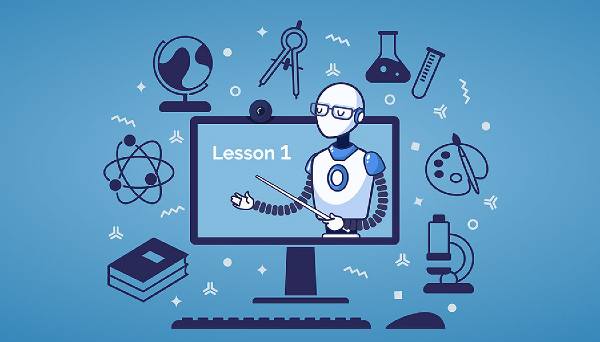Artificial Intelligence and Its Impact on Education

Artificial Intelligence (AI) is a technology that involves the development of computer systems that can perform tasks that typically require human intelligence, such as recognizing speech, decision-making, and language translation. The impact of AI in various sectors is significant, including education. This article examines the advantages and disadvantages of AI in education, provides examples of AI in education, and discusses the future of AI in education.
Advantages of Artificial Intelligence in Education
Personalized Learning
AI in education enables personalized learning by providing students with customized learning paths that suit their needs, interests, and abilities. Through data analysis, AI systems can assess individual students’ progress, identify areas where they need improvement, and provide personalized feedback and guidance.
Virtual Assistants
AI virtual assistants can help students by providing real-time assistance with their queries, assignments, and projects. They can also help teachers by automating administrative tasks, such as grading and attendance-taking, which frees up their time to focus on teaching.
Intelligent Tutoring Systems
Intelligent Tutoring Systems (ITS) are AI-powered learning systems that provide students with interactive and personalized learning experiences. They can adapt to the student’s learning pace and style and provide immediate feedback and support.
Automated Grading
AI-powered grading systems can automate the grading process, providing quick and accurate feedback to students. This not only saves teachers time but also provides students with immediate feedback, allowing them to make corrections and improvements.
Distance Learning
AI-powered distance learning systems can provide students with flexible learning opportunities, regardless of their location. They can attend virtual classes, access online materials, and interact with teachers and other students through various online platforms.
Student and Teacher Efficiency
AI can improve the efficiency of both students and teachers. For example, AI-powered learning platforms can track students’ progress, making it easier for teachers to identify areas where they need help. Teachers can then provide individualized support, rather than spending time on repetitive administrative tasks.
Disadvantages of Artificial Intelligence in Education
Dependence on Technology
The integration of AI in education requires significant investment in technology infrastructure and resources, which may not be feasible for all educational institutions. Dependence on technology also poses a risk of system failures, which could disrupt learning and teaching.
Lack of Human Interaction
AI-powered learning systems lack the human interaction and socialization that traditional classroom learning provides. This could lead to a lack of emotional and social development, which is essential for holistic learning.
Limited Access
AI-powered learning systems may not be accessible
to all students, especially those who come from disadvantaged backgrounds. Access to the necessary technology and resources may be limited, which could widen the education gap.
Reliability and Accuracy of Data
AI-powered systems depend on the accuracy and reliability of data, which could be influenced by bias and errors. These systems need to be continually monitored and adjusted to ensure that the data used is reliable and accurate.
Examples of AI in Education
AI in K-12 Education
AI is already being used in K-12 education, mainly for personalized learning and assessment. Some schools are using AI-powered tutoring systems to provide students with individualized support and feedback. Others are using AI-powered grading systems, which provide teachers with accurate and timely grading of assignments.
AI in Higher Education
In higher education, AI is being used to support research and teaching. For example, some universities are using AI-powered systems to analyze research data and to automate administrative tasks, such as student enrollment and record-keeping.
AI in Online Learning
AI is also being used in online learning platforms to provide students with personalized learning experiences. These platforms use AI algorithms to analyze student data and provide tailored content and feedback.
Future of Artificial Intelligence in Education
Integration of AI in the Curriculum
The integration of AI in the curriculum is expected to continue, as it offers personalized learning opportunities, improves teaching efficiency, and enhances student engagement. AI-powered learning systems are expected to become more sophisticated, providing even more personalized and tailored learning experiences.
Impact on Teaching and Learning
The integration of AI in education is expected to change the roles of both teachers and students. Teachers are likely to spend less time on repetitive administrative tasks and more time on developing personalized teaching strategies. Students are likely to be more engaged in their learning, as AI systems provide tailored content and feedback.
Changes in Employment
The integration of AI in education could also have significant implications for employment. While AI systems can automate many administrative tasks, they cannot replace human teachers. However, the roles and responsibilities of teachers are likely to evolve, requiring them to develop new skills and competencies.
Ethics of AI in Education
The integration of AI in education raises significant ethical concerns, such as the potential for bias in data and the impact on student privacy. As such, it is essential to develop ethical frameworks for the use of AI in education to ensure that it benefits all students and does not perpetuate existing social and economic inequalities.



